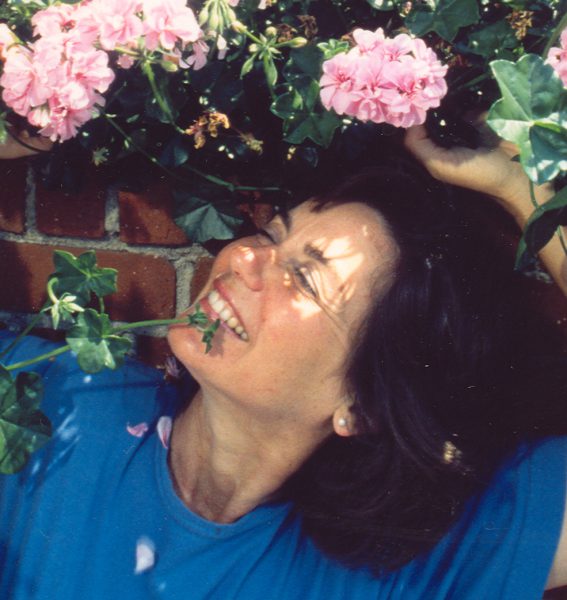 By Annlia Hill
By Annlia Hill
Great-grandfather Franklin Reed built a small cottage on Ocean Avenue in 1903, about the time plein air artist Norman St Clair first painted in Laguna Beach and businessman Elmer Jahraus moved to Laguna and opened a cigar factory and curio shop in the Beach Hotel. At this time, only 11 permanent families lived in town. According to Reed’s son-in-law Merton Hill, “I helped father Reed to build his first house in Laguna … Father built two houses that year on lots costing $25 each.”
The cottage, just east of the Laguna Post (newspaper) building and across the street from the Community Playhouse (which weren’t built until later), went to Grandma Carrie after her father died. The property backed up to the “slough,” the drainage channel for Laguna Canyon. The cottage had neither plumbing (indoor or out) nor electricity. Coal oil lamps provided the lighting; coal oil heaters the heat. Drinking water came from the hand-pumped water well out in Laguna Canyon and was hauled back to town in 20- and 25-gallon containers, which sat on the back porch. An outhouse was in the back. The beds pulled down from the wall. The big attraction was the beach, less than a quarter mile away, with virtually nothing in between.
Carrie and her kids spent the summers at this cottage, but Grandpa had to work during the week. The trip from Garden Grove was long, as the only road into Laguna was the Laguna Canyon Road, which was not paved until 1917. Several Garden Grove friends also escaped the inland heat by trekking to Laguna. Fred and Lillie Harrison and their four kids had a cottage at Sleepy Hollow. The families often gathered around a fire on the beach at night, filling themselves with roasted wieners (or a big albacore if a local fisherman shared his catch) and singing songs.
The youngest Harrison was Lorrin “Whitey,” born in 1913. His family would come to their summer house in Laguna by horse and wagon. He built his first bodyboard in fifth grade – a plank, four to five feet long, 18 inches wide. He credited his interest in surfing to a trip to Redondo Beach in 1920, when he first saw people surfing standing up. By age 12, Whitey had transitioned from body to stand up surfing and, eight years later, was among the first to ride the waves at San Onofre. In 1932 Whitey stowed away aboard a ship destined for Hawaii, was caught and returned to the mainland. Not to be forestalled, he stowed away on the next ship out and, this time was allowed to stay in Hawaii. Here he learned board-building techniques from the great Hawaiian surfers, becoming one of California’s first surfboard shapers – 70-pound redwood boards for Pacific Systems Homes, the first company to manufacture surfboards commercially. He won the Pacific Coast Surf Riding Championships in 1933. Out of the water, you could spot him in his aloha shirt, palm-frond hat, and ukulele in hand.
Next door to the family cottage lived the Duarte family. The eldest son was a volunteer fireman. The Laguna Beach Fire Department was started in 1919 with 21 volunteer firefighters. The old Hotel Laguna (actually The New Hotel Laguna as the first burned to the ground 60 days after opening in 1888) burned again. Carrie, seeing the flames and knowing young Durate slept on the front porch, tried to wake him but to no avail. Since the fire department consisted of only a hose cart and volunteers, it probably made no difference. The present hotel was opened in 1930 after the demolition of the fire-prone board-and-batten building in 1928 and the construction of a “more modern establishment.”
Another house on Ocean was the home of Dave and Gussie Green, who were among the first black families to settle in Laguna Beach. They arrived in Laguna in 1938, acquiring this house in 1942. Mr. Green was employed as a chauffeur for George “Slim” Summerville. Summerville was a film actor and director best known for his comedies. This Keystone Kop’s career spanned both the silent and sound eras, and his contribution to the motion picture industry was recognized with a star on the Hollywood Walk of Fame. In 1920, he built an ocean-front home in Sleepy Hollow, which later became the Beach House Restaurant. Maybe Slim participated in the family wiener roasts at Sleepy Hollow.
The US Census population in Laguna in 1900 and 1910 was not recorded. In 1920, it was 363 and growing. About time for the family to dig up roots, move out of the commercial downtown, and find a quieter spot in Laguna.
Annlia is a 50-year resident of Laguna Beach and married to a fourth-generation Lagunan. Having walked nearly every street and alley in town, she has observed firsthand the artistic charm and imagination of residents.




